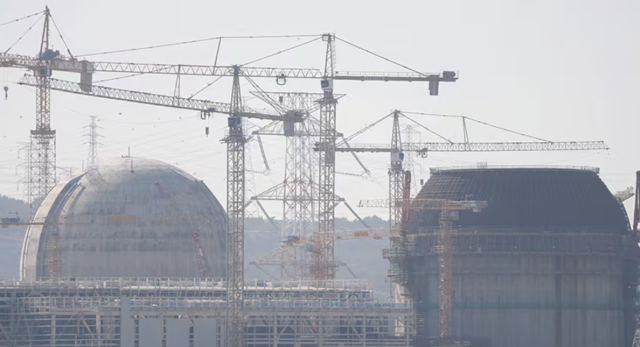
SEOUL, June 27 (AJP) - South Korea has begun dismantling its first commercial nuclear reactor, Kori-1, following final approval from the Nuclear Safety and Security Commission on Thursday. The project, led by Korea Hydro & Nuclear Power (KHNP), is expected to span 12 years, ending with full site restoration by 2037.
Kori-1, located in Gijang County, Busan some 320 kilometers (198 miles) southeast of Seoul, was a 595-megawatt pressurized water reactor built by Westinghouse. It began commercial operations in 1978 and was permanently shut down in June 2017 after nearly four decades of service. KHNP submitted its final decommissioning plan in 2021, which received regulatory approval this week.
Ahead of physical dismantling, KHNP began chemical decontamination work in 2023 to reduce radiation levels in key systems such as the reactor coolant and residual heat removal systems.
The dismantling process will begin next month with the removal of equipment from the turbine hall, desalination facilities, and outdoor tanks. Spent nuclear fuel is scheduled to be removed by 2031, with final decontamination and site cleanup completed six years later.
KHNP has allocated about one trillion won, or about $736 million, for the entire project. The budget includes 808.8 billion won for dismantling work and 262.5 billion won for waste disposal, all funded through its decommissioning reserve.
Several challenges remain. One of the biggest is managing radioactive waste. KHNP expects to generate about 14,500 drums of low- and intermediate-level waste, raising concerns over whether the existing disposal facility in Gyeongju can handle the load, especially as other reactors are also nearing retirement.
The spent fuel currently stored in the reactor’s wet pool will also need to be transferred to dry storage. KHNP plans to build a storage facility onsite by 2030, but it must first secure local consent by 2028. Public opposition is expected.
The future use of the Kori-1 site remains undecided. Given its proximity to the operating Kori 2, 3, and 4 reactors, full environmental restoration for public or agricultural use appears unlikely. Regulators are considering a restricted industrial zone suitable for facilities such as factories.
South Korea currently holds 96 key technologies related to decommissioning, developed by KHNP and the Korea Atomic Energy Research Institute. Government-backed research and development is also underway to expand capabilities, including technologies for dismantling heavy water reactors like those at the Wolsong plant.
According to the International Atomic Energy Agency, 214 nuclear reactors around the world have been permanently shut down, with 588 expected to close by 2050. So far, only four countries, the United States, Germany, Japan, and Switzerland, have completed full commercial reactor decommissioning.
Copyright ⓒ Aju Press All rights reserved.





View more comments